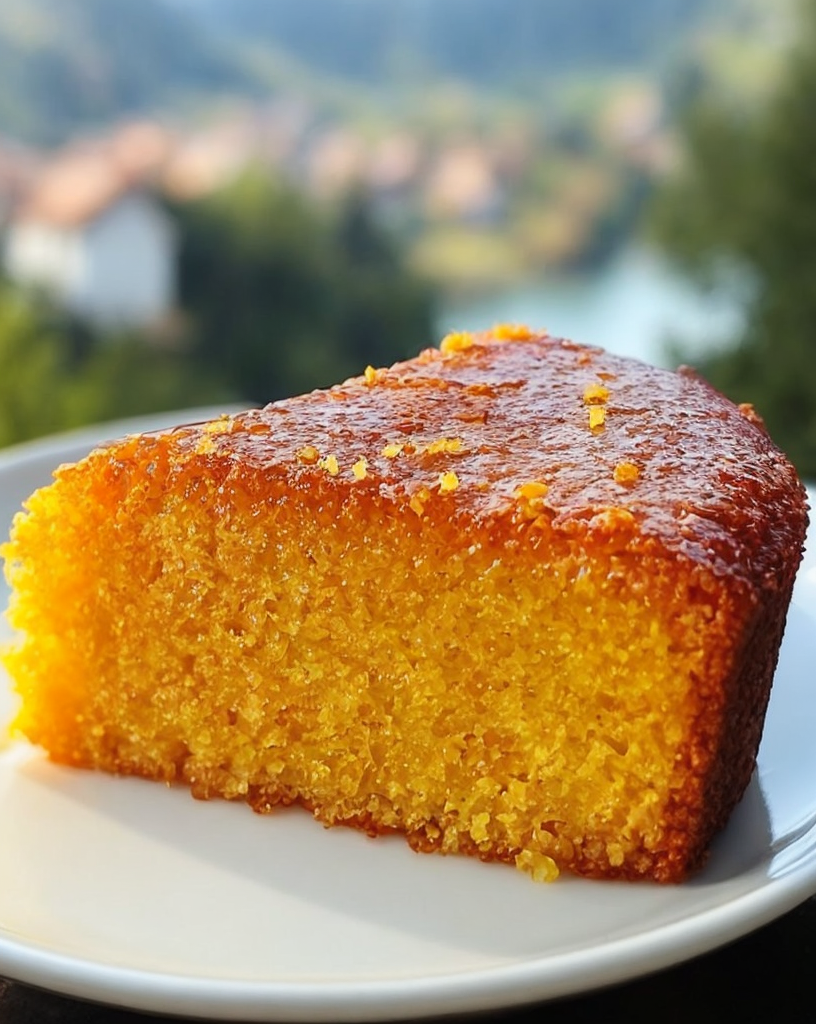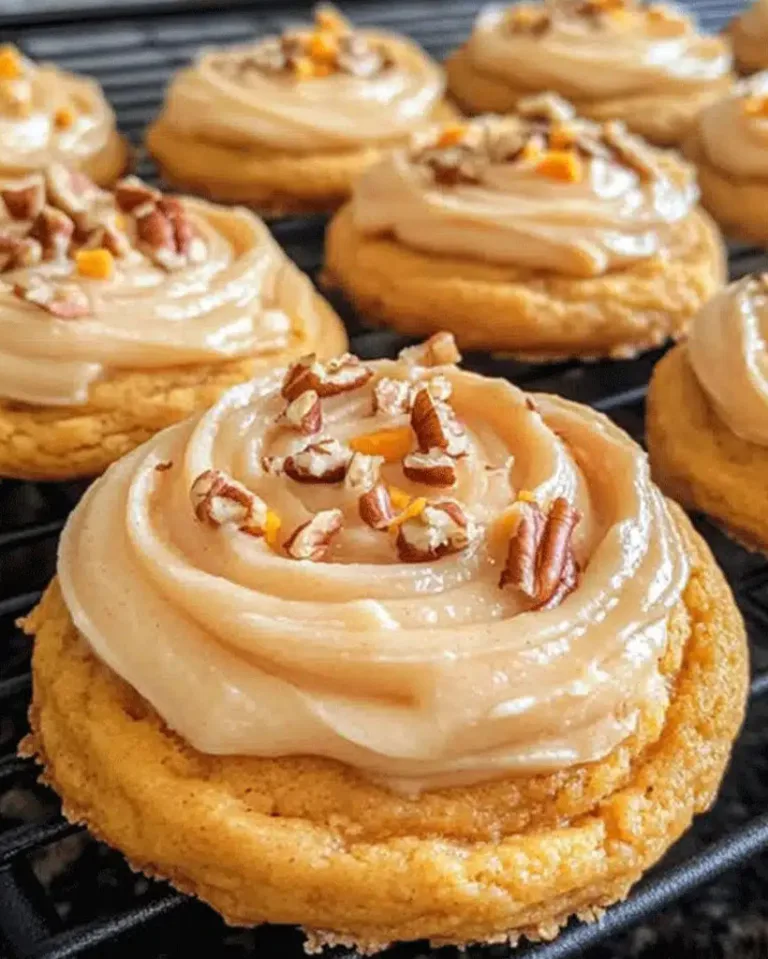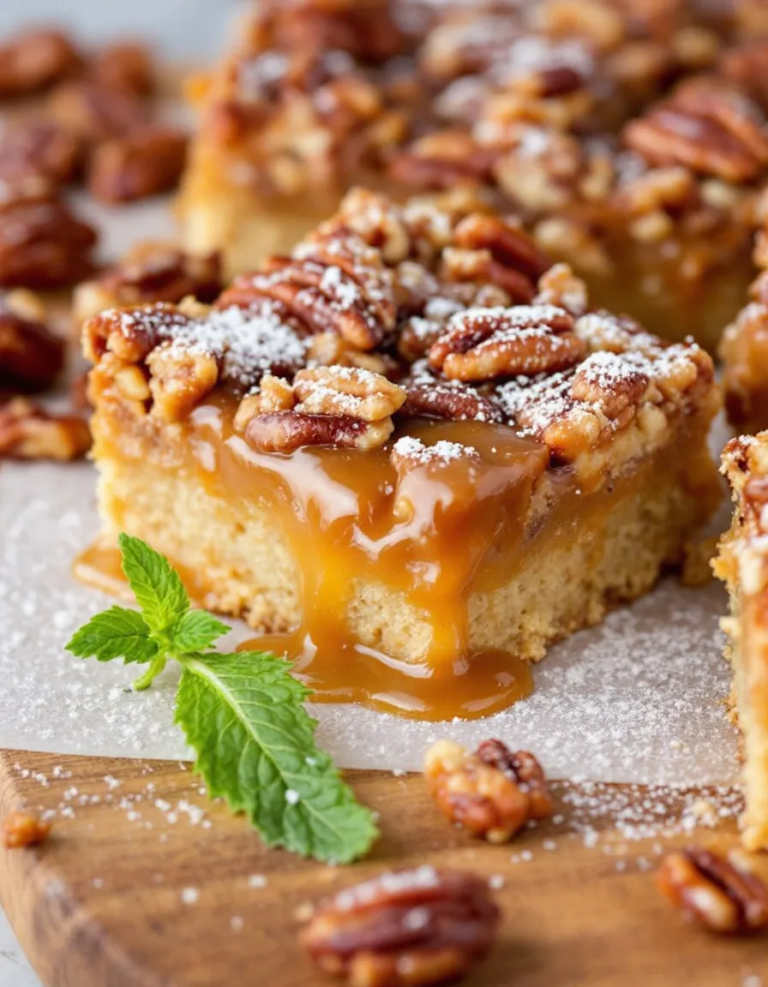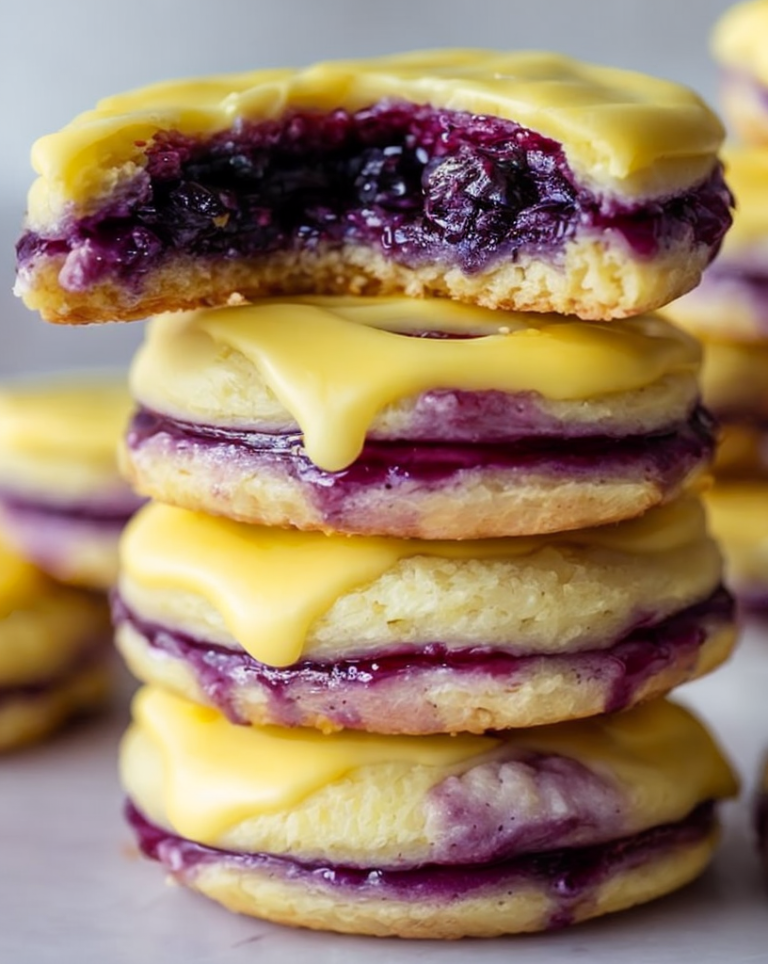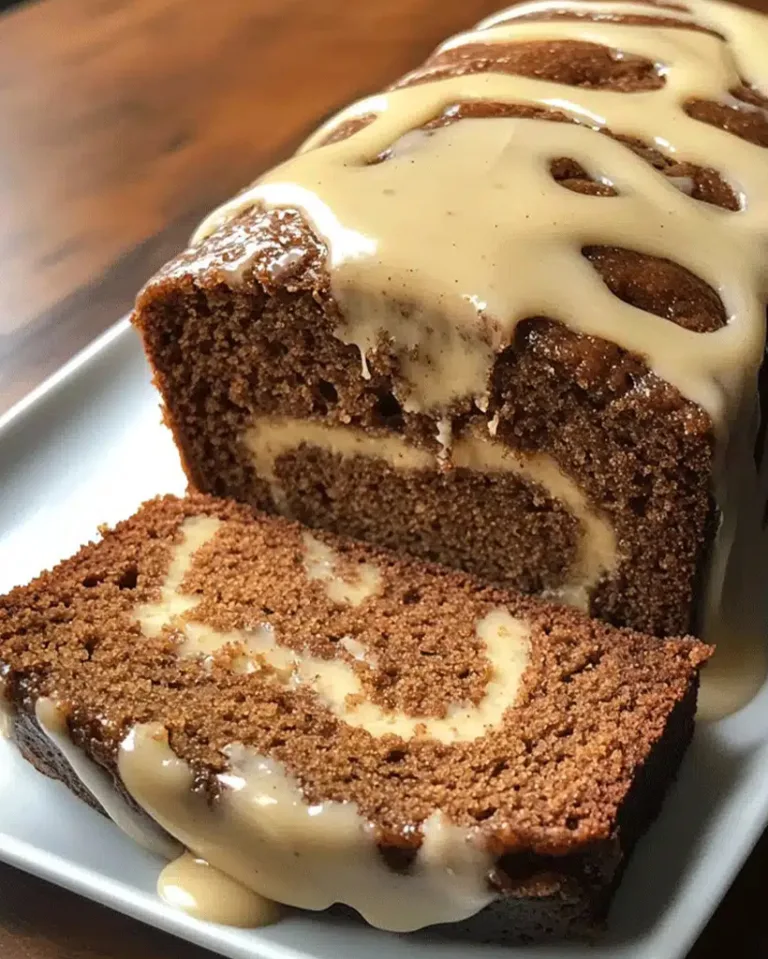Ultimate Maple Honey Sweet Potato Cornbread Recipe – Delicious Family Favorite
Maple Honey Sweet Potato Cornbread Recipe: A Delightful Twist on a Classic Favorite
Get ready to dive into an irresistible blend of flavors with our Maple Honey Sweet Potato Cornbread Recipe. The natural sweetness of honey and maple syrup pairs wonderfully with the earthy tones of sweet potatoes, creating a cornbread that’s not just a side dish, but a standout star of any meal. With its moist crumb and rich taste, this recipe is bound to capture the hearts of family and friends alike.
Made with wholesome ingredients, this cornbread recipe is a perfect balance of unique flavors and comforting textures. Whether you’re serving it alongside a hearty chili or presenting it at a festive holiday dinner, this dish embodies the best of homemade goodness. Get ready to impress with a cornbread that’s as beautiful as it is delicious, with a golden crust and flecks of sweet potato throughout.
Quick Recipe Highlights
- Flavor Profile: This cornbread boasts a sweet yet savory flavor, harmonizing the earthiness of sweet potatoes with the natural sweetness of maple syrup and honey.
- Texture: The cornbread is wonderfully moist and tender, with a crumbly exterior that gives way to a soft and palatable inside.
- Aroma: The warm, comforting scent of baked sweet potatoes and rich maple syrup fills the air as this cornbread bakes, creating an inviting and welcoming atmosphere.
- Visual Appeal: The golden hue from the sweet potatoes and the light glaze from the honey give this cornbread a beautiful, eye-catching appearance.
- Skill Level Needed: This recipe is straightforward and ideal for beginners, requiring basic mixing and baking techniques.
- Special Equipment: A simple mixing bowl, a whisk, and a baking dish are all you need to create this delectable cornbread.
Recipe Overview
- Difficulty Level: The simplicity of steps and use of readily available ingredients make this an easy recipe suitable for cooks of all levels.
- Category: This cornbread fits perfectly as a side dish but can also be enjoyed as a snack or a breakfast bread.
- Cuisine: While traditionally known in Southern cuisine, this recipe offers a modern twist with the addition of maple syrup and sweet potatoes.
- Cost: Being budget-friendly, the ingredients are affordable and accessible at most local grocery stores.
- Season: Best enjoyed in the fall and winter months when sweet potatoes are in season, maximizing flavor and freshness.
- Occasion: Ideal for family dinners, potlucks, and holiday gatherings where it can be shared and enjoyed by everyone.
Why You’ll Love This Recipe
The taste and texture appeal of this Maple Honey Sweet Potato Cornbread are truly one of a kind. The sweetness of the maple syrup and honey beautifully complements the rich earthiness of the sweet potatoes, creating a flavor profile that’s both comforting and exciting. The texture is moist and tender, making each bite a delight.
Convenience is key, and this cornbread recipe ensures a hassle-free preparation process. With minimal prep time and straightforward instructions, this recipe fits seamlessly into any cooking routine, making it an easy choice for busy weekdays or lazy weekends.
Nutritional advantages are a bonus, as sweet potatoes are loaded with essential vitamins and minerals, making this cornbread a healthier choice compared to traditional recipes. You’ll be nourishing your family while treating them to something tasty and satisfying.
Social and entertaining value is high with this recipe. It’s a guaranteed conversation starter and often the dish that gets the most praise at gatherings. Whether served with a dollop of butter or a drizzle of extra honey, it’s sure to make a lasting impression.
Cost-effectiveness and accessibility play a significant role in the appeal of this dish. With staple ingredients that are easy to find and budget-friendly, this cornbread doesn’t just taste good—it feels good to make for family and friends.
Historical Background and Cultural Significance
The origin story of cornbread traces back to Native American cuisine, where corn was a staple ingredient. Over time, cornbread became an essential part of Southern cooking, celebrated for its simplicity and versatility.
Culturally, cornbread holds a special place in Southern hospitality. It symbolizes warmth and welcoming, often served as a staple alongside many meals. The addition of sweet potatoes and maple syrup in this recipe further enriches its cultural tapestry by bringing in flavors that are loved across different regions.
The evolution of the recipe showcases how traditional dishes can adapt and thrive, incorporating new ingredients and modern tastes. Sweet potato cornbread is a testament to that evolution, offering a fresh perspective on a heritage dish.
Regional variations of cornbread include additions like jalapeños, cheese, or even bacon, highlighting its adaptability. This particular recipe offers a sweet variation, perfect for those who love a touch of sweetness in their bread.
Ingredient Deep Dive
Sweet potatoes, the star of this cornbread, have a rich history that dates back thousands of years to Central and South America. Nutritionally, they are a powerhouse of vitamins A and C, fiber, and antioxidants, contributing to a balanced and healthy diet.
When selecting sweet potatoes, look for ones that are firm with smooth skin and no blemishes. Store them in a cool, dry place away from direct sunlight to extend their shelf life. For substitutions, you could consider using butternut squash for a similar texture.
Maple syrup adds a distinct, rich flavor to the cornbread. It has a rich cultural significance in North America, particularly in Canada, where it is produced and celebrated widely. Maple syrup is a natural sweetener, offering a caramel-like taste without refined sugars.
When buying maple syrup, choose 100% pure syrup for the best flavor. Store it in the refrigerator after opening to keep it fresh. If you need a substitution, consider using agave nectar or golden syrup.
Common Mistakes to Avoid
- Overmixing the batter can result in a dense cornbread. Mix until just combined to keep the texture light and fluffy.
- Skipping the preheating step can lead to uneven cooking. Always preheat your oven to ensure the cornbread bakes evenly.
- Neglecting the use of parchment paper can cause the cornbread to stick to the pan, making it difficult to remove. Line your baking dish for best results.
- Using low-quality maple syrup affects flavor significantly. Invest in a good-quality maple syrup for a more authentic taste.
- Failing to check for doneness can lead to undercooked sections in the center. Use a toothpick to test if it comes out clean.
- Not allowing the cornbread to cool before slicing can result in crumbly pieces. Let it rest to set properly.
- Improperly measuring ingredients can throw off the recipe balance. Use the right measuring tools for precision.
- Substituting sweet potatoes with regular potatoes will alter the taste and texture. Stick to sweet potatoes for best results.
Essential Techniques
Understanding the technique of roasting sweet potatoes is crucial for this recipe. Roasting deepens their flavor, caramelizes their sugars, and enhances the overall taste of the cornbread.
To master this technique, cube the sweet potatoes and toss them in a little oil before roasting. This ensures even cooking and a sweet, mellow flavor. Watch for visual cues like browning edges and a softened texture to guide you.
Another key technique is mixing, which dictates the cornbread’s texture. Overmixing develops gluten, resulting in a tough bread, so it’s important to only mix until combined. The batter should be just smooth, with no visible flour streaks.
Baking to perfection requires an understanding of oven behavior. Temperature consistency is key, so an oven thermometer can help ensure the exact heat settings. Also, ensure your baking dish is appropriately sized to promote even cooking without overbrowning the edges.
Pro Tips for Perfect Maple Honey Sweet Potato Cornbread
Grate the sweet potatoes finely to integrate them smoothly into the batter, enhancing the texture without dominating it.
Add nuts like pecans or walnuts for a crunchy twist that complements the soft sweetness of the cornbread.
Incorporate a pinch of cinnamon or nutmeg to deepen the flavor profile and add warmth.
Use room-temperature ingredients to ensure a more even mix and better texture.
Brush the top with maple syrup after baking for a glossy finish and added sweetness.
Consider muffins as an alternative shape for the batter to create individual servings perfect for on-the-go snacking.
Allow the cornbread to cool slightly before cutting to maintain its shape and ease of serving.
Experiment with cheese additions for a savory twist that contrasts beautifully with the sweet notes in the batter.
Variations and Adaptations
For regional variations, consider adding chopped jalapeños for a spicy Southern kick or integrating cranberries for a holiday-themed adaptation.
Seasonal adaptations could include using pumpkin puree in place of sweet potatoes for an autumnal variation that celebrates fall flavors.
Dietary modifications are easily accommodated. Use gluten-free flour blends to make the recipe gluten-friendly or replace the dairy with almond milk for a lactose-free option.
To explore flavor variations, try substituting half the honey with molasses, adding complex, dark notes that complement the sweetness.
Texture modifications like adding a streusel topping provide an additional layer of crunch and flavor, enhancing both the taste and visual appeal.
For presentation alternatives, bake the cornbread in a cast iron skillet for a rustic look that retains heat well and ensures evenly browned edges.
Serving and Presentation Guide
When it comes to plating techniques, consider serving wedges of cornbread on a wooden board for a rustic look or on a modern slate for a contemporary vibe.
Garnishing ideas include a dollop of whipped honey butter or a sprinkle of chopped herbs like rosemary or thyme to add a fresh contrast.
Traditional accompaniments could be a warm bowl of chili or a hearty stew, while modern serving suggestions might include a fresh green salad or a light soup.
Temperature considerations suggest serving the cornbread warm, when its flavors are most pronounced, although it remains delicious at room temperature too.
Portion control tips emphasize cutting the cornbread into moderate squares, ensuring everyone has a taste without overwhelming their plates.
Wine and Beverage Pairing
For wine pairings, a light-bodied white like a Pinot Grigio complements the sweetness without overpowering it, creating a balanced taste experience.
Non-alcoholic alternatives such as a spiced apple cider provide a warm, seasonal beverage that enhances the flavors in the cornbread.
If coffee or tea is preferred, a robust black tea or a smooth medium roast coffee serves as a pleasant accompaniment, balancing the sweet and earthy flavors.
Temperature considerations are vital, ensuring drinks are served at their optimal temperature to enhance the overall taste perception.
Serving suggestions include offering beverages in complementary styled glassware or mugs that echo the rustic or modern theme of your presentation.
Storage and Shelf Life
Store any leftover cornbread in an airtight container at room temperature for up to two days, preserving its moisture and flavor.
Temperature requirements suggest avoiding the fridge, as refrigeration can dry out the bread. Instead, room temperature storages ensure it remains soft and tender.
Container recommendations favor glass or BPA-free plastic to maintain freshness without imparting any odors or flavors.
Signs of spoilage include any unusual odors or excessive hardness, indicating it’s past its prime. Always check these before consuming leftovers.
Reheating instructions recommend warming in the oven for a few minutes to restore its freshly baked texture and flavor.
Freezing guidelines suggest wrapping individual pieces tightly in plastic wrap and storing them in a freezer bag for up to one month.
Make Ahead Strategies
For a successful prep timeline, consider making the sweet potato puree in advance, storing it in the fridge for up to three days until needed.
Storing between steps can be managed by mixing the dry ingredients and sweet potato puree separately and combining them just before baking for optimal freshness.
Quality impact assessments reveal that pre-making and freezing cornbread doesn’t drastically affect its taste, although fresh-baked is always best for texture.
When it comes to assembly tips, ensure all ingredients are at room temperature for easy mixing and better baking results.
Reheating guidelines support using the oven over the microwave, which can sometimes lead to uneven texture or dryness.
Adding fresh elements like a brush of butter or a sprinkle of herbs after reheating can enhance the freshly-baked appeal.
Scaling Instructions
Halving the recipe is simple; adjust all ingredients proportionally, ensuring your baking dish size is also modified to suit the smaller quantity.
Doubling or tripling can be achieved by maintaining ingredient ratios, but be mindful of baking times, which might require slight adjustments depending on your oven’s capacity.
Equipment adjustments involve using larger mixing bowls and baking dishes to accommodate increased volumes without spills.
Timing modifications may include increased baking time for larger quantities, so keep a close watch and test for doneness before removing from the oven.
Storage considerations for larger batches recommend cooling completely before storing in airtight containers to prevent condensation from affecting texture.
Nutritional Deep Dive
Macronutrient breakdown reveals this cornbread provides a healthy balance of carbohydrates, proteins, and fats, supporting a balanced diet.
Micronutrient analysis highlights vitamins like A and C from the sweet potatoes alongside minerals such as calcium and iron, based on ingredient choices.
Health benefits include the potential for improved vision from vitamin A and enhanced immune function from vitamin C, both abundant in sweet potatoes.
Dietary considerations note the inclusion of natural sweeteners helps reduce added sugars typically found in cornbread recipes, supporting better health decisions.
Portion analysis advises moderate serving sizes to maintain balance within meals, accounting for the cornbread’s energy density.
Weight management tips suggest pairing the cornbread with fiber-rich salads or lean proteins to create a balanced plate without excessive caloric intake.
Dietary Adaptations
For a gluten-free version, use a one-to-one gluten-free flour substitute to maintain the cornbread’s texture and structure.
The dairy-free option can be achieved by replacing butter with coconut oil and using almond milk, ensuring the cornbread remains moist and flavorful.
To make it vegan, substitute eggs with flax eggs (a mixture of ground flaxseed and water) and dairy with plant-based alternatives for a compassionate, delicious twist.
Low-carb modifications could involve using almond flour or coconut flour, although these alternatives may alter the texture.
For those following a keto diet, using erythritol or a similar sugar substitute can mimic the sweetness without the carbs.
A paleo adaptation is possible by using honey as a sweetener and almond flour as the base, avoiding processed grains.
Low-FODMAP adjustments could involve ensuring all ingredients are certified low-FODMAP, making it suitable for sensitive dietary needs.
The Recipe
Maple Honey Sweet Potato Cornbread
Serves: 8
Prep Time: 15 mins
Cook Time: 30 mins
Total Time: 45 mins
Kitchen Equipment Needed
- Mixing bowls
- Whisk
- Baking dish
- Parchment paper
- Oven mitts
- Potato masher or grater
Ingredients
- 1 cup mashed sweet potatoes
- 1/2 cup maple syrup
- 1/4 cup honey
- 1/4 cup melted butter
- 2 large eggs
- 1 cup milk
- 1 1/2 cups cornmeal
- 1/2 cup all-purpose flour
- 1 tablespoon baking powder
- 1/2 teaspoon salt
Directions
- Preheat your oven to 375°F (190°C) and line your baking dish with parchment paper.
- In a large mixing bowl, combine mashed sweet potatoes, maple syrup, honey, melted butter, eggs, and milk. Whisk until smooth.
- In a separate bowl, mix together the cornmeal, flour, baking powder, and salt.
- Gradually add the dry ingredients to the wet ingredients, stirring until just combined.
- Pour the batter into the prepared baking dish and smooth the top with a spatula.
- Bake for 30 minutes or until a toothpick inserted into the center comes out clean.
- Allow to cool in the baking dish for 10 minutes before removing to cool completely on a wire rack.
- Serve warm and enjoy!
Recipe Notes
- To enhance sweetness, drizzle additional honey over the top before serving.
- You can substitute almond milk for a dairy-free version.
- Add a teaspoon of cinnamon for a comforting spice note.
Troubleshooting Guide
To tackle texture issues, ensure not to overmix the batter to maintain its softness and crumbly delicacy. If the cornbread is too dense, it’s likely due to overmixing or imprecise measurements.
For achieving the right flavor balance, taste the mixture before baking and adjust the level of sweetness or salt to suit your preference.
Temperature problems often arise from incorrect oven settings. Use an oven thermometer to check for accuracy and ensure even heat distribution.
Equipment challenges might stem from using inappropriate baking dishes. Opt for a mid-sized dish that’s neither too deep nor too shallow.
Ingredient substitutions, like using almond flour, can alter the cake’s texture and baking time, so adjustments may be necessary to maintain consistency.
Timing concerns may manifest if the cornbread is undercooked in the center. Use the toothpick test to confirm doneness before removing from the oven.
Recipe Success Stories
Many community members have shared delightful feedback, recounting how this cornbread has become a family staple during festive gatherings. Readers have successfully tried other variations by infusing fruity elements or adding herbs.
Some have embraced healthier adaptations, integrating nut-based flours and accompanying the cornbread with nutritious spreads.
Others enjoy experimenting with photography, capturing the vibrant colors of the bread and sharing tips on social platforms for perfect food styling.
Frequently Asked Questions
Yes, simply replace the all-purpose flour with a gluten-free blend. Ensure it’s a one-to-one swap for best texture results.
What can I use instead of sweet potatoes?
Butternut squash or pumpkin puree can work as substitutes, each offering a distinct flavor variation.
How should I store the leftovers?
Store in an airtight container at room temperature for two days or freeze for longer storage, ensuring pieces are well-protected to maintain freshness.
Can I reduce the sugar content?
Absolutely. You can reduce the maple syrup and honey quantity by half if a less sweet version is desired.
Is it possible to make this vegan?
Yes. Use flax eggs and plant-based buttermilk (almond milk plus lemon juice) to replace eggs and dairy, adapting it for a vegan diet.
What kind of cornmeal should I use?
Fine or medium-ground cornmeal works best for a smooth texture, retaining the classic cornbread flavor and structure.
Can I add any spices?
Certainly. Spices such as cinnamon, nutmeg, or even chili powder can add interesting flavor layers to the recipe.
What if my cornbread is too crumbly?
It might be overbaked or have insufficient binding ingredients. Ensure moisture balance and check baking progress regularly.
How do you ensure it’s not raw in the middle?
Conduct the toothpick test: insert in the center and if it comes out clean or with a few crumbs, it’s ready. Adjust bake time if necessary.
Can I make it ahead of time for an event?
Yes. Prepare the day before and warm in the oven before serving to freshen its texture and taste.
What if I don’t have maple syrup?
Honey or agave syrup can act as viable substitutes, providing sweetness albeit with a slight flavor change.
Is it safe to reheat in the microwave?
You can microwave for quick reheats, but this may compromise texture slightly compared to oven reheating.
Additional Resources
To explore similar recipes, consider our Sweet Potato Hash Browns for a savory breakfast twist or Sweet Potato Pie as a decadent dessert option.
Technique guides are available to master the art of roasting vegetables evenly, maximizing their natural sweetness and texture.
Ingredient information is conveniently offered through our nutrition links, explaining the full range of benefits associated with key components.
Equipment recommendations discuss the best tools for baking, from government-grade thermometers to versatile baking dishes.
Seasonal variations and suggestions are detailed throughout our collection, creating complementing suggestions to enhance every meal.
Join the Conversation
We’d love for you to share your experiences through social media, using #MapleHoneyCornbread to join our culinary community.
Feel free to offer photography tips or provide feedback to fellow readers in the comments section, enriching everyone’s cooking endeavors.
Rate the recipe and share unique adaptations you may have explored—your creativity inspires our passionate community to try new things.
Together, through culinary adventures and shared stories, we continue to build a vibrant platform celebrating the love of cooking and delicious food.

